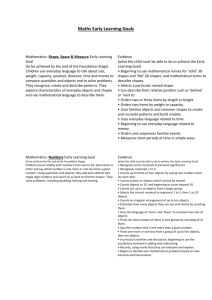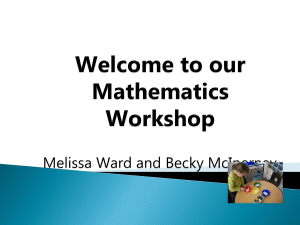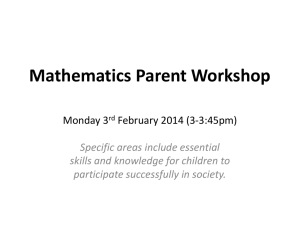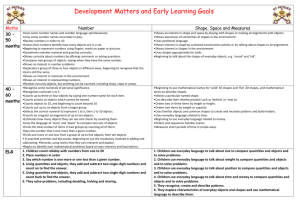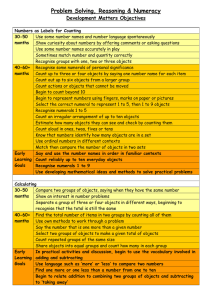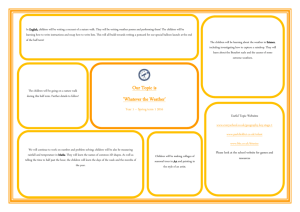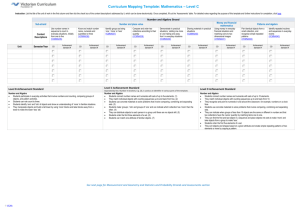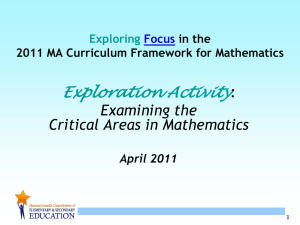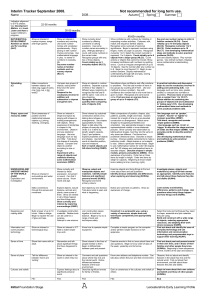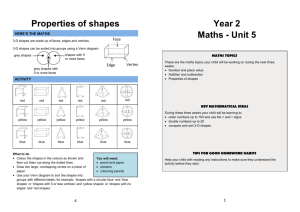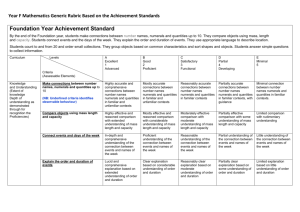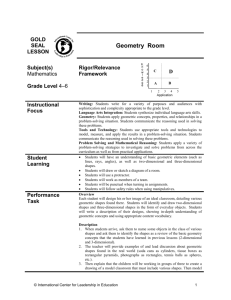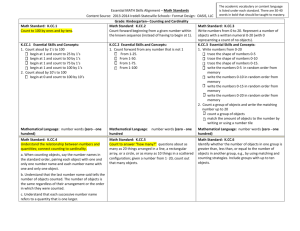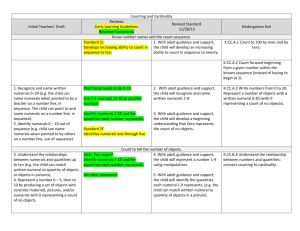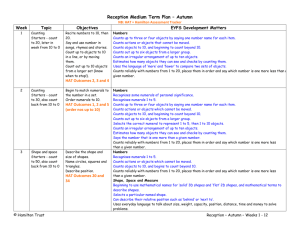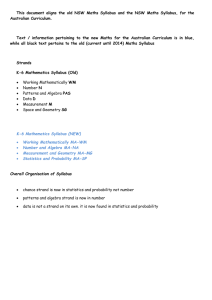Maths Foundation Stage
advertisement
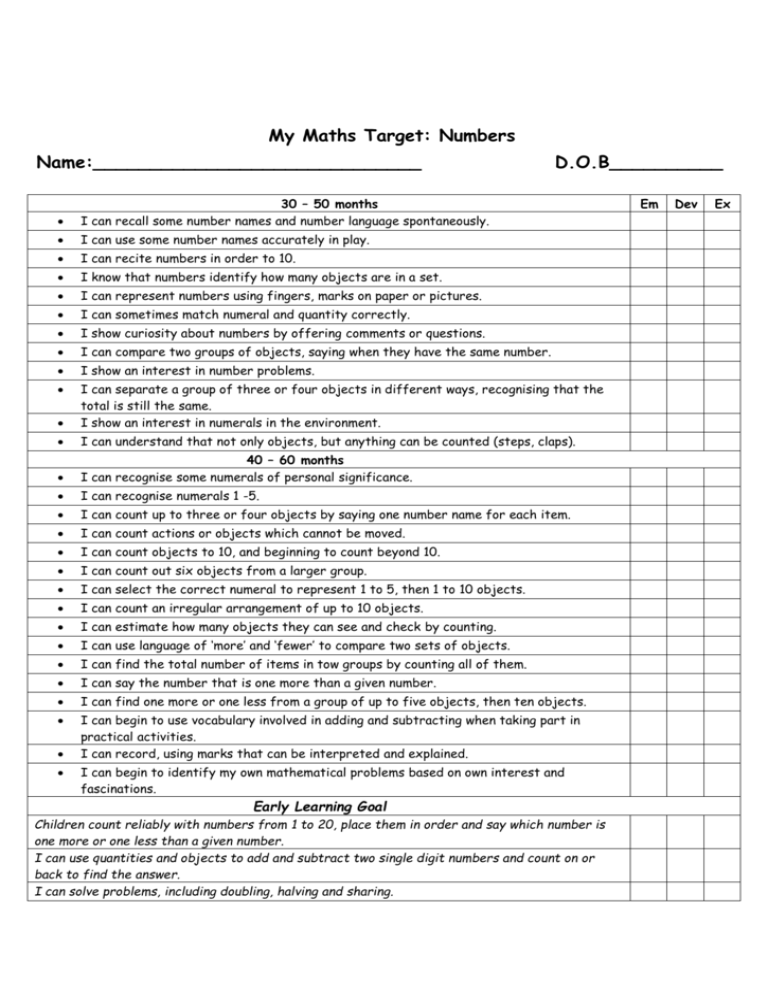
My Maths Target: Numbers Name:_____________________________ D.O.B__________ 30 – 50 months I can recall some number names and number language spontaneously. I can use some number names accurately in play. I can recite numbers in order to 10. I know that numbers identify how many objects are in a set. I can represent numbers using fingers, marks on paper or pictures. I can sometimes match numeral and quantity correctly. I show curiosity about numbers by offering comments or questions. I can compare two groups of objects, saying when they have the same number. I show an interest in number problems. I can separate a group of three or four objects in different ways, recognising that the total is still the same. I show an interest in numerals in the environment. I can understand that not only objects, but anything can be counted (steps, claps). 40 – 60 months I can recognise some numerals of personal significance. I can recognise numerals 1 -5. I can count up to three or four objects by saying one number name for each item. I can count actions or objects which cannot be moved. I can count objects to 10, and beginning to count beyond 10. I can count out six objects from a larger group. I can select the correct numeral to represent 1 to 5, then 1 to 10 objects. I can count an irregular arrangement of up to 10 objects. I can estimate how many objects they can see and check by counting. I can use language of ‘more’ and ‘fewer’ to compare two sets of objects. I can find the total number of items in tow groups by counting all of them. I can say the number that is one more than a given number. I can find one more or one less from a group of up to five objects, then ten objects. I can begin to use vocabulary involved in adding and subtracting when taking part in practical activities. I can record, using marks that can be interpreted and explained. I can begin to identify my own mathematical problems based on own interest and fascinations. Early Learning Goal Children count reliably with numbers from 1 to 20, place them in order and say which number is one more or one less than a given number. I can use quantities and objects to add and subtract two single digit numbers and count on or back to find the answer. I can solve problems, including doubling, halving and sharing. Em Dev Ex My Maths Target: Shape, Space and Measure Name:_____________________________ D.O.B__________ 30 – 50 months I can show an interest in shape and space by playing with shapes or making arrangements with objects. I can show awareness of similarities of shape in the environment. I can use positional language. I can show an interest in shape by sustained construction activity or by talking about shapes or arrangements. I can show an interest in shapes in the environment. I can use shapes appropriately for tasks. I can begin to talk about the shapes of everyday objects e.g. ‘round’ and ‘tall’ 40 – 60 months I can begin to use mathematical names for ‘solid’ 3D shapes and ‘flat’ 2D shapes, and mathematical terms to describe shapes. I can select a particular named shape. I can describe their relative position such as ‘behind’ or ‘next to’. I can order two or three items by length or height. I can order two items by weight or capacity. I can use familiar objects and common shapes to create and recreate patterns and build models. I can use everyday language related to time. I can begin to use everyday language related to money. I can orders and sequences familiar events. I can measure short periods of time in simple ways. Early Learning Goal I can use everyday language to talk about size, weight, capacity, position, distance, time and money to compare quantities and objects and to help solve problems. I can recognise, create and describe a pattern. I can explore the characteristics of everyday objects and shapes and use mathematical language to describe them. Em Dev Ex
